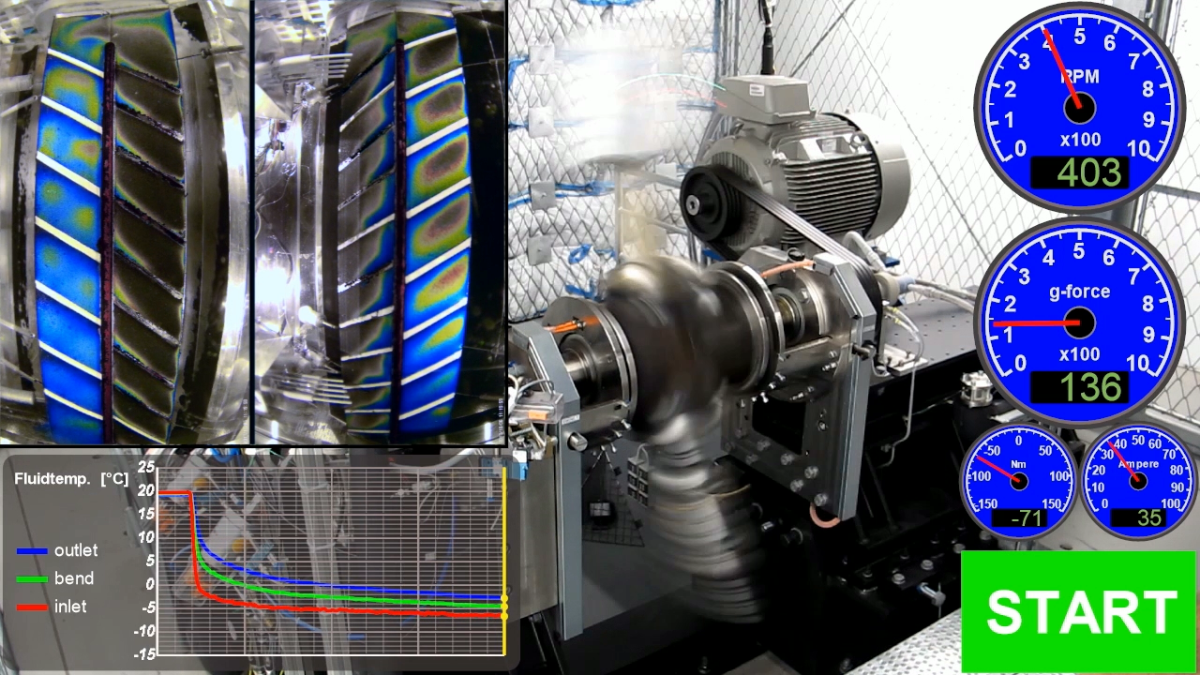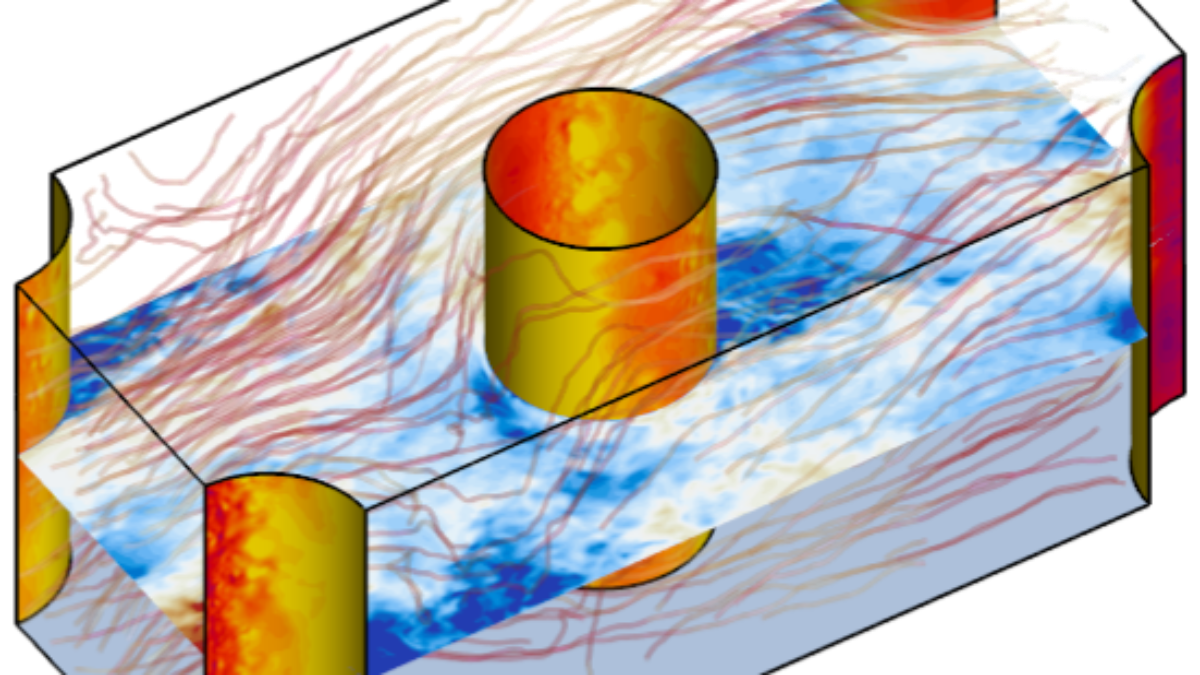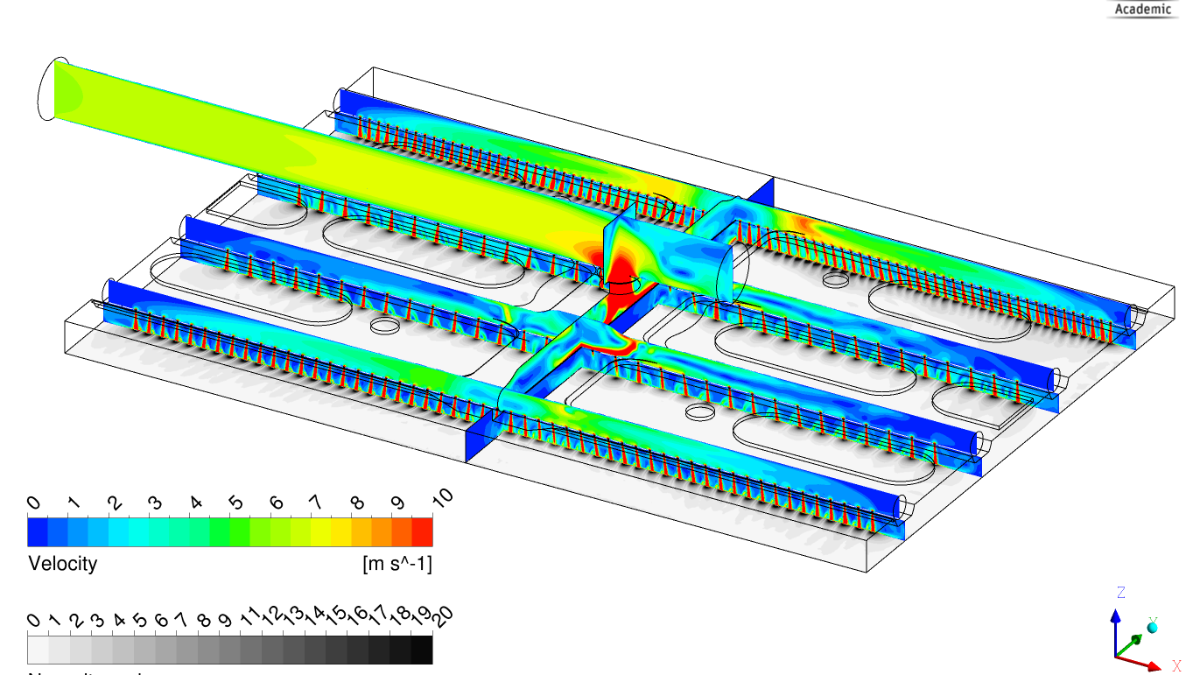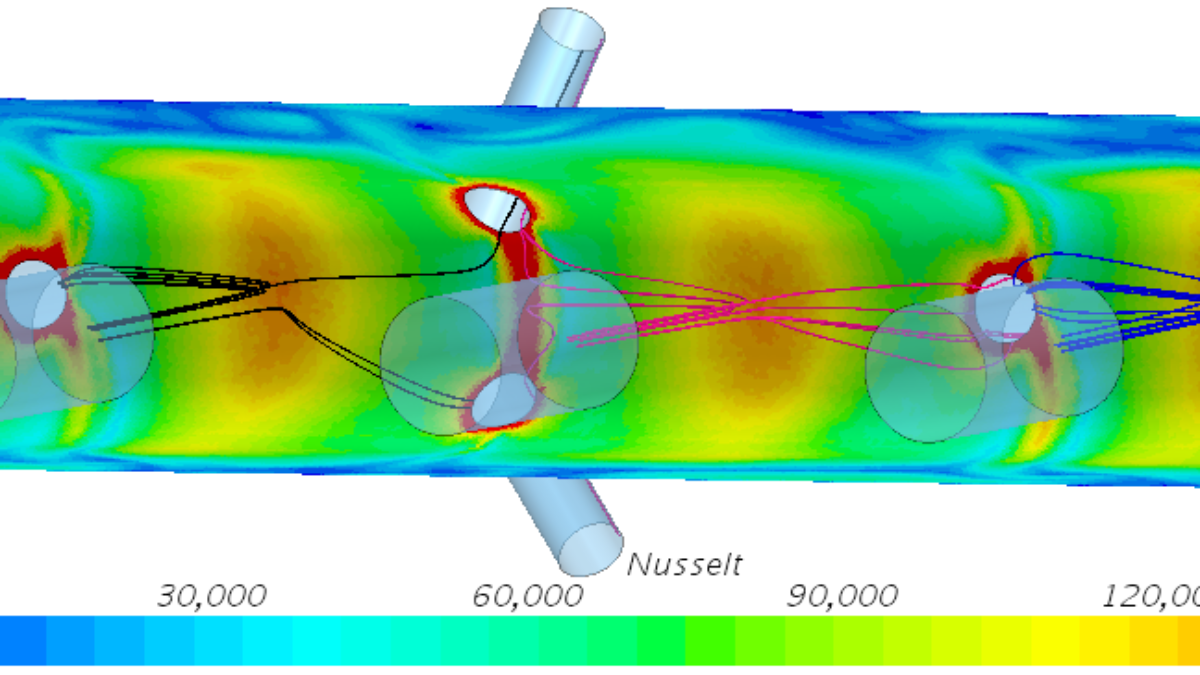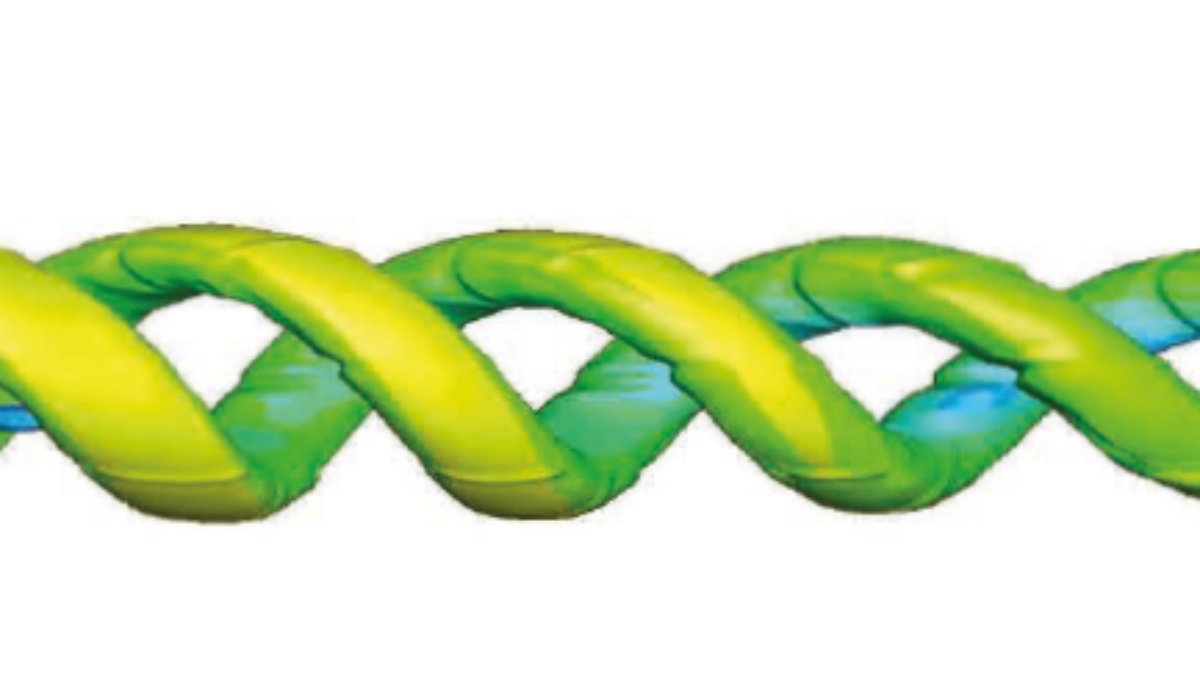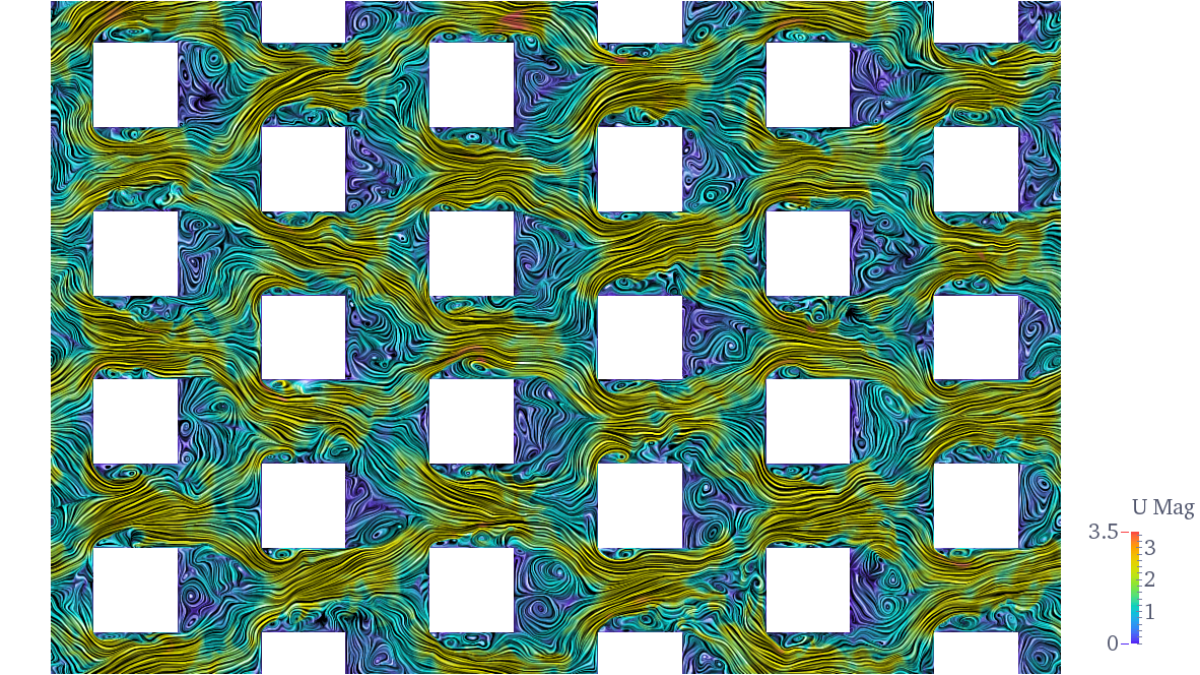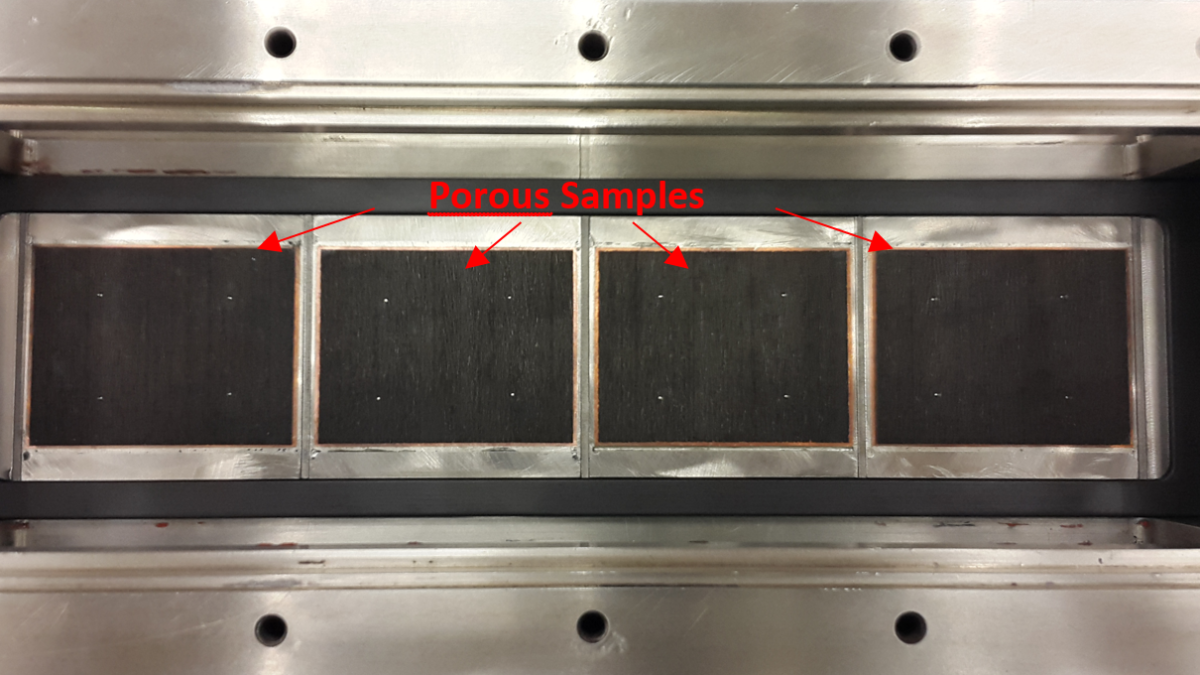Themen der Wärmeübertragung am ITLR
Experimental
Transpiration cooling is a promising temperature management technology for aerospace applications such as rocket combustion chambers encountering high flow temperatures of above 2500 K. In order to understand the basic thermophysical transport (C/C) wall segments are conducted under external heat loads in the medium temperature facility (MTF) at ITLR.mechanisms of this active cooling method, experiments on single porous carbon/carbon.
Contact: Andreas Schwab, M.Sc.
The objective of the project is to develop new efficient simulation methods for the analysis of transient conjugated heat transfer processes in aircraft engines further, using open source CFD packages. For this purpose, detailed experimental investigations with an existing experimental test rig for local heat transfer measurements with optical methods are used, which support the development and verification of the simulation approaches.
Contact Person: Christopher Hartmann, M.Sc.
Contact: Simon Köhler, M.Sc.
Modern gas turbine blades are exposed to high thermal loads and must be cooled efficiently. The so-called cyclone cooling chamber, also called cyclone tube, represents a promising possibility for cooling the leading edge of the blades. A cyclone tube consists of a tube with one or more tangential inlets, which impose a strong twist on the flow. The resulting high flow velocities close to the wall and the strong turbulent mixing result in high heat transfer coefficients. The aim of the project is to investigate different convergent cross-sectional profiles along the cyclone tube and their effect on flow and heat transfer.
Contact: Florian Seibold, M.Sc.
The curved blade leading edges of turbine blades directly behind the combustion chamber are among the most heavily loaded components of a gas turbine. Optimized internal blade cooling enables higher temperatures and thermal efficiencies of the gas turbine. For this purpose, various impact beam geometries/configurations are investigated experimentally and numerically.
Contact: Marius Forster, M.Sc.
Selective laser melting (3D printing) offers new possibilities in the development of high efficient cooling systems in turbomachines. Within the European Union’s Research and Innovation Programme Horizon 2020: TURBO-REFLEX a new measurement technique will be developed in order to determine local heat transfer characteristics of engine-scale metal parts. Experimental results are supported by numerical simulations and will allow a detailed understanding of the influence of different cooling schemes and surface roughness on aero-thermal performance.
Contact: Tobias Krille, M.Sc.
Research network: Horizon 2020: TURBO-REFLEX
Thermally highly loaded turbine blades are equipped with internal cooling channels. At the ITLR, such cooling systems have long been investigated using the transient liquid crystal measurement method to determine the heat transfer distributions on the cooling channel walls. A newly developed rotating test rig now enables us to investigate such cooling systems under the influence of rotation. Rotation additionally influences the cooling air flow by Coriolis forces and rotation-related buoyancy forces, which can significantly change the heat transfer distribution.
Contact: Dipl.-Ing. Christian Waidmann
This study deals with the numerical and experimental investigation of complex impact beam arrangements. Numerical simulations of flow and heat transfer characteristics are performed with the commercial flow solver ANSYS CFX. An experimental setup using infrared thermography is used to validate the numerical results. In an open wind tunnel, the impact rays can additionally be superimposed with a cross flow. The investigation is based on an existing MTU Aero Engines AG cooling system to reduce annular gap losses in low-pressure turbines.
Contact: Dipl.-Ing. Julia Wienand
Numerical
To improve cooling systems of modern gas turbine blades, the local cooling properties of a system must be known under all relevant operating conditions. The aim is to reduce internal cooling air consumption in order to increase efficiency while simultaneously reduce emissions. To increase the internal heat transfer of gas turbine blades, a combination of different cooling mechanisms such as impingement jets, pin fins and ribs is used, resulting in very complex flows. To better predict the resulting temperature of the blades, an improvement of the existing numerical models to describe the turbulent flow is required.
Contact: Dipl.-Ing. Philipp Wellinger
This project aims to optimize cooling processes in turbine components by applying new turbulence and scalar flux models. The focus lies in the method of film cooling in gas turbines used for electrical power generation. The main goal is the reduction of the amount of cooling air used and thus an improvement of the power plants overall efficiency and a reduction of pollutant emission. The Project is a cooperation between ITLR and Siemens AG. It is supported by the German Federal Ministry for Economic Affairs and Energy.
Contact: Hendrik Mayer, M.Sc.
Numerical simulation on pore scale of heat and mass transport in porous media considering two-phase flow, phase transition and coupling between free flow and porous medium.
Contact: Johannes Müller, M.Sc.
Contact Persons

Bernhard Weigand
Prof. Dr.-Ing. habil.Director
Susanne Stegmeier
Secretariat/Administration



